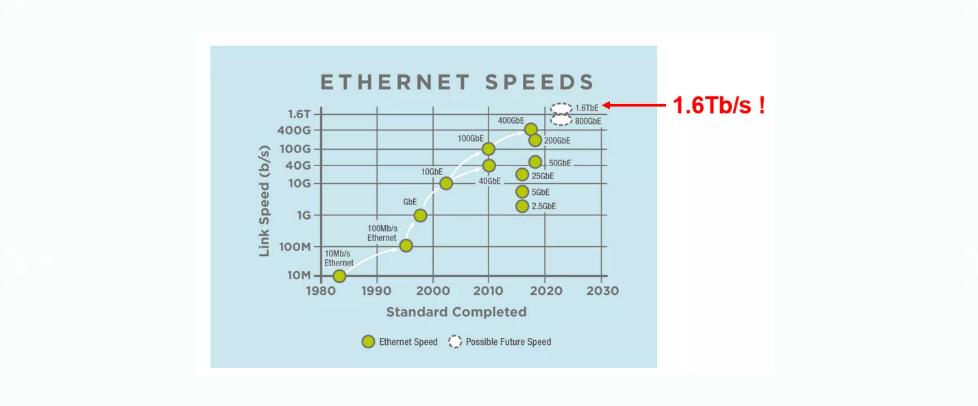Abstract: Recently, the National Information Optoelectronics Innovation Center (NOEIC), Pengcheng Laboratory, the State Key Laboratory of Optical Fiber Communication Technology and Network of China Information and Communication Technology Group, and Wuhan Guangxun Technology Co., Ltd. took the lead in completing the joint development and functional verification of 1.6Tb/s silicon-based optical transceiver chips in China, realizing the first leap from Silicon Optical Chip Technology to TB/s level in China.
With the vigorous development of emerging technologies such as supercomputing, artificial intelligence, and 5G, the demand for global data exchange has exploded, and the optical transceiver module market has reached 100 billion. At present, the international 400G optical transceiver has entered the commercial deployment stage, and the development and technical standards for 800G optical transceiver prototypes are being promoted. On December 13, 2021, the MSA (Multi-Source Agreement) industry alliance for 1.6T optical interfaces was announced, announcing that 1.6Tb/s optical modules will become the next hot spot for global competition. However, 1.6Tb/s optical chip has extremely high challenges in terms of rate, integration, packaging technology, etc., and there is no clear and perfect solution in the world.

Recently, the National Information Optoelectronics Innovation Center (NOEIC), Pengcheng Laboratory, the State Key Laboratory of Optical Fiber Communication Technology and Network of China Information and Communication Technology Group, and Wuhan Guangxun Technology Co., Ltd. took the lead in completing the joint development and functional verification of 1.6Tb/s silicon-based optical transceiver chips in China, realizing the first leap from China's silicon optical chip technology to tb/s level.
The researchers integrated 8 channels of high-speed electro-optical modulators and high-speed photodetectors on a single silicon-based optical transmitter chip and a silicon-based optical receiving chip, each channel can achieve photoelectric and electro-optical conversion of 200Gb/s PAM4 high-speed signal, and finally completed the verification of optical interconnect technology with a single chip capacity of up to 8×200Gb/s through chip packaging and system transmission tests. This work refreshes the best level of single-chip optical interconnection rate and interconnection density in China, showing the outstanding advantages of ultra-high speed, ultra-high density and high scalability of silicon optical technology, and providing a reliable optical chip solution for broadband interconnection in next-generation data centers.
NOEIC has been committed to promoting the technological evolution of high-end optoelectronic chips, domestic first production and industrial transformation. In recent years, it has made continuous breakthroughs in ultra-high-speed optical transceiver chip technology, and has developed a series of new ultra-100Gbaud silicon optical modulators and detector achievements, which have been released on Nature Communications, IEEE JSSC, ECOC PDP, ACP PDP, and selected as "Top Ten Advances in Chinese Optics" and "Top Ten Research Progresses in Chinese Semiconductors", making sufficient technical reserves for TB/s optical modules.
NOEIC also actively participates in and promotes the formulation of relevant standards, leading the China Communications Standardization Association (CCSA) "100GBaud and above high-speed optical transceiver device research" and "800G optical transceiver integrated module: 4×200G" standard, contributing to the formulation of high-speed optical transceiver industry standards in China. The National Information Optoelectronics Innovation Center will continue to jointly complete relevant technical verification and industrial transformation among the dominant units within the United Nations, and strive to provide strong support for the acceleration and upgrading of China's information optoelectronics industry and the rapid occupation of the commanding heights of the industry.